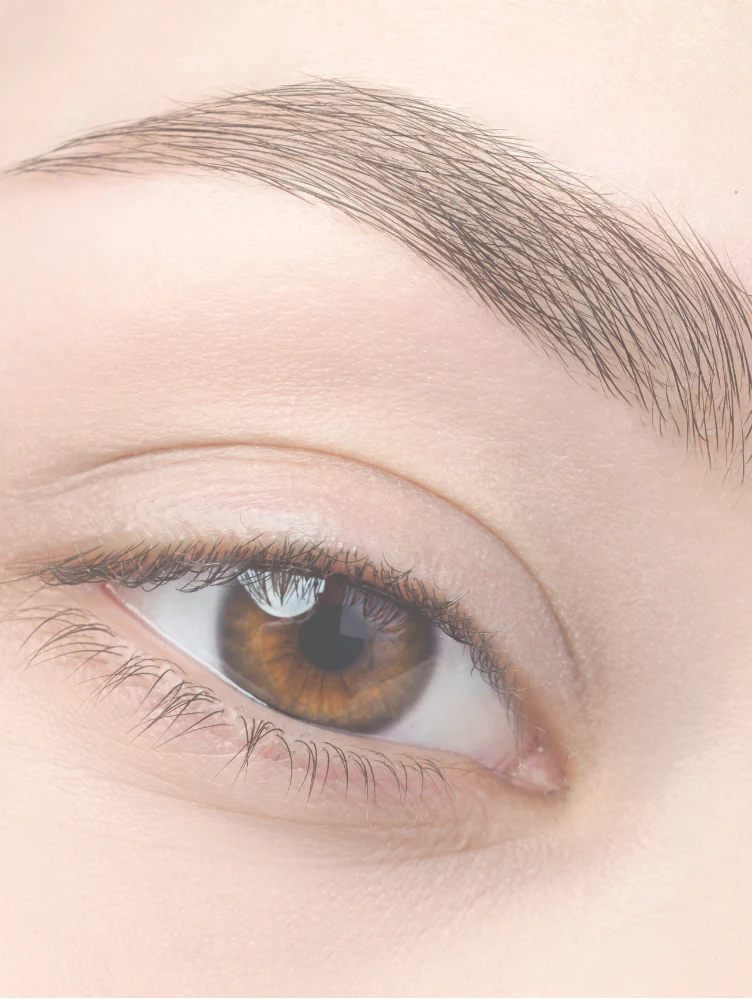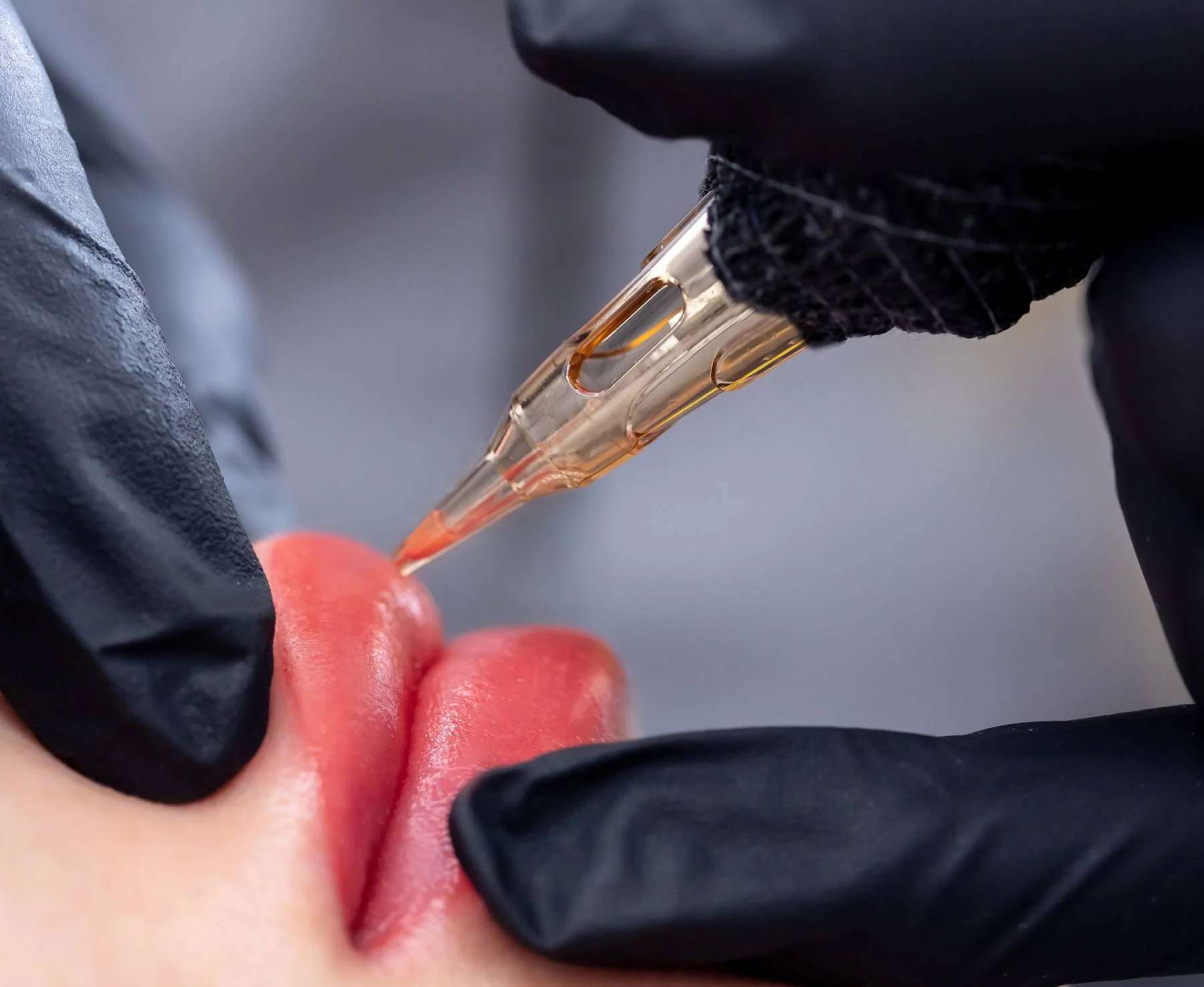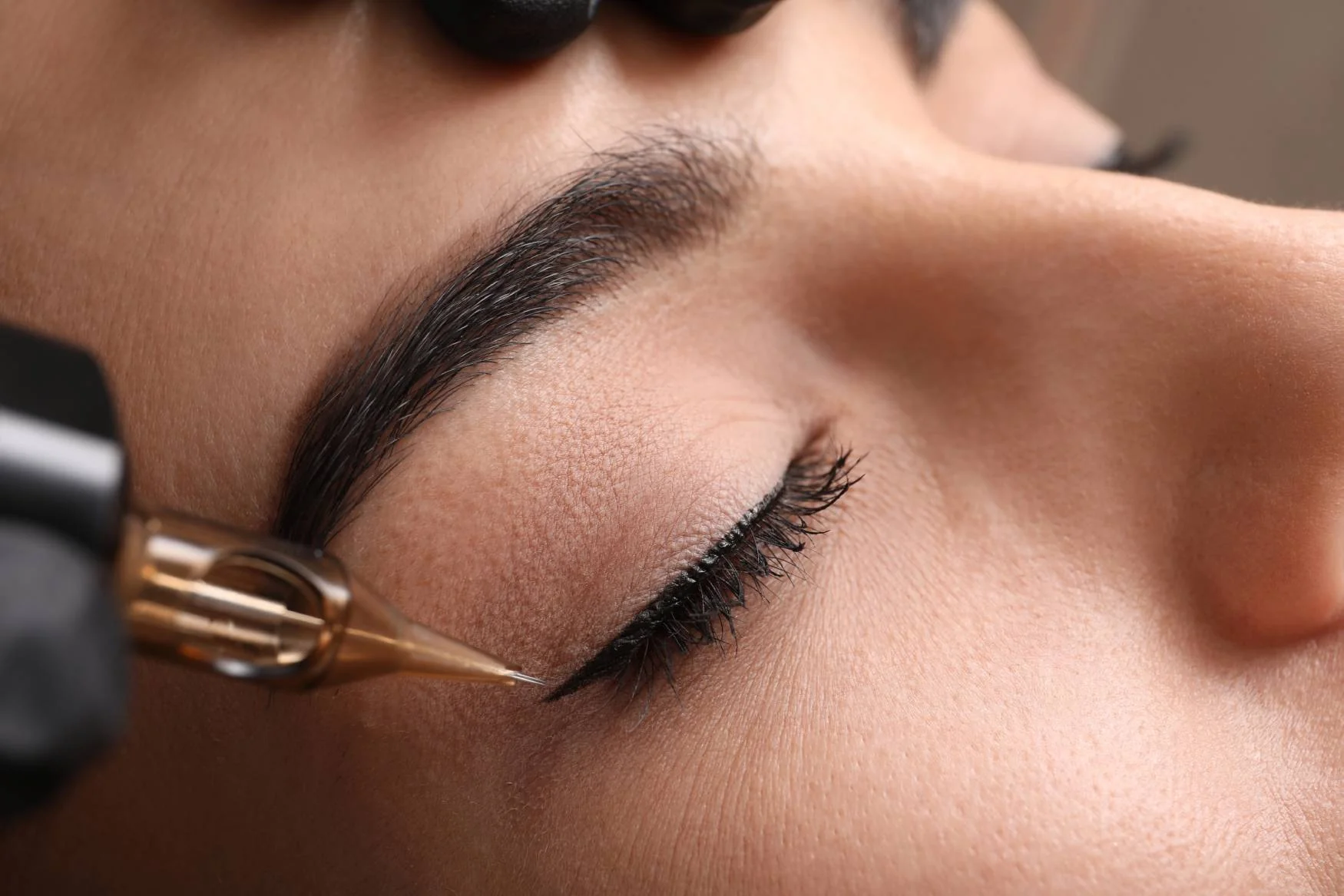SERVICES
Permanent Makeup
Training available!
IT IS AN ART, AND WE ARE ARTISTS!
Permanent makeup is a pigmentation of the skin performed with a dermograph that introduces pigment into the upper layers of the dermis and allows to recreate a natural & delicate makeup. The possibilities are endless!



THE POSSIBILITIES
Permanent makeup is a pigmentation technique that enhances natural beauty by intensifying the eyebrow line, delicately tinting the lip or even densifying the lash line. You will be amazed by the finesse of the results.

Eyebrows

Eyes

Lip
Find out more about the treatment.
What is permanent makeup?
Permanent makeup is a pigmentation procedure performed with a dermograph that introduces pigment into the upper layers of the dermis. This allows to recreate the effect of a natural and delicate makeup, whether it is on the eyebrows, lips or eyes. The possibilities are endless!

How long does it take to heal?
The visible healing time is calculated to be between 7 and 10 days and 4 to 6 weeks before the color stabilizes to give way to the final result.
The day after the service, the color will be much more intense. Don’t worry, this is part of the normal process. Afterwards, the crust that has formed will start to flake off, leaving a much lighter pigmentation. You will then have the impression that you have nothing left.
You need to give the skin some time to allow the pigment to resurface and, if it does not appear in certain areas, the planned touch-up will finalize the work while intensifying the pigmentation.

How does a permanent make-up service work?
Depending on the area to be treated and the work to be done, the service can last between 2 and 3 hours. In general, the consultation is an integral part of the appointment. Our experienced technicians will start by asking you questions to find out what you want and expect from the pigmentation. A drawing will then be made according to your morphology, allowing to obtain a nice result highlighting your natural beauty. The choice of pigment will be made according to your phototype and your skin tone. Pigmentation will then begin, during which a topical anesthetic will be applied to make the procedure more comfortable.

Will I need a retouch?
Approximately 4 to 6 weeks after the first appointment, a touch-up will be necessary to ensure proper pigment retention. Afterwards, the results of a permanent makeup procedure last between 3 and 5 years before fading considerably. We recommend maintaining your pigmentation with touch-ups in order to keep the results as long as possible. Remember that semi-permanent makeup is an ART and not an exact science. Results can vary depending on age, cell regeneration capacity, the intensity of the pigment used and lifestyle habits.

Before – Before – Before
After – After – After
What you will need to do before & after the service
Before the performance

- It is important to gently exfoliate the area to be pigmented (lip-brow) a few days before treatment and moisturize the area intensely with the goal of allowing better absorption of the pigment by the skin.
- You should not expose the area to be pigmented to the sun for at least 1 week before the procedure. If necessary, apply sun protection frequently.
- Avoid drinking coffee, tea and/or energy drinks on the morning of the appointment. Do not consume very spicy food or alcohol a few days before the service.
- No waxing, laser or electrolysis near the area to be pigmented for at least 1 week before the service.
- At least 4 weeks before the procedure you may not perform any skin care that activates cell regeneration near the area to be pigmented such as: peeling, microneedling, microdermabrasion, etc.
- Do not take ibuprofen (advil/aspirin) at least 48 hours before the appointment (except when prescribed).
- Discontinue the use of topical creams containing Retin-A / AHA near the area to be pigmented at least 2 weeks before the service.
- If you have already had oral herpes and have an appointment for lip pigmentation, we strongly suggest that you consult your health care professional to obtain a prescription for Valtrex for prevention following the procedure.
- In the event that you have an appointment for eye pigmentation you must remove your eyelash extensions in preparation for the pigmentation. You must also remove your contact lenses, if applicable.
After the performance

Eyes
- It is suggested to apply cold compresses for the first 24 hours in order to reduce swelling. It is normal to have some swelling following the procedure, which usually disappears after 24-48 hours.
- You can only apply makeup to the eyes for the full visible healing time, which is about 7-10 days.
Eyes
- It is very important not to try to remove the small crusts that have formed on the surface of the pigmentation. These must fall off naturally to maximize pigment retention.
- In case you have pigmented an eyeliner tip, it is possible to apply a thin layer of balm on it. This does not apply to lash densification.
Lips
- The external healing process is very quick for the lips. It usually takes 3 to 5 days.
- You should know that the color will be very intense at the beginning but that following the external healing, it will decrease by about 80%. The color will then slowly return to the surface after 4 to 6 weeks.
Eyes
- If you have a history of oral herpes, we recommend that you contact your health care provider to discuss the possibility of taking an antiviral medication for prevention.
- It is normal to have significant swelling following pigmentation. This can give the illusion of uneven pigmentation. Don’t worry, it will diminish considerably after a few hours.
Eyebrows
- The external healing time varies between 7 to 10 days. Pigmentation will be very intense at first but will diminish considerably after healing.
- Do not scrape, rub or pull off the scabs. They should fall off naturally in order to maximize pigment retention.
Eyes
- Avoid sleeping on the pigmented area so as not to prematurely remove the scabs that have formed.
- Apply a thin layer of balm on the cleaned eyebrows if needed. Do not apply makeup to the area until external healing is complete.
Contraindications
- Anyone taking daily anticoagulants.
- People with diabetes, who are pregnant or nursing.
*Please note that certain contraindications may be admissible only with the approval of a physician.
Eyes
- People undergoing chemotherapy, hemophilia or having an autoimmune disease.
- People with an active skin disease near the area to be pigmented or undergoing accutane treatment.
